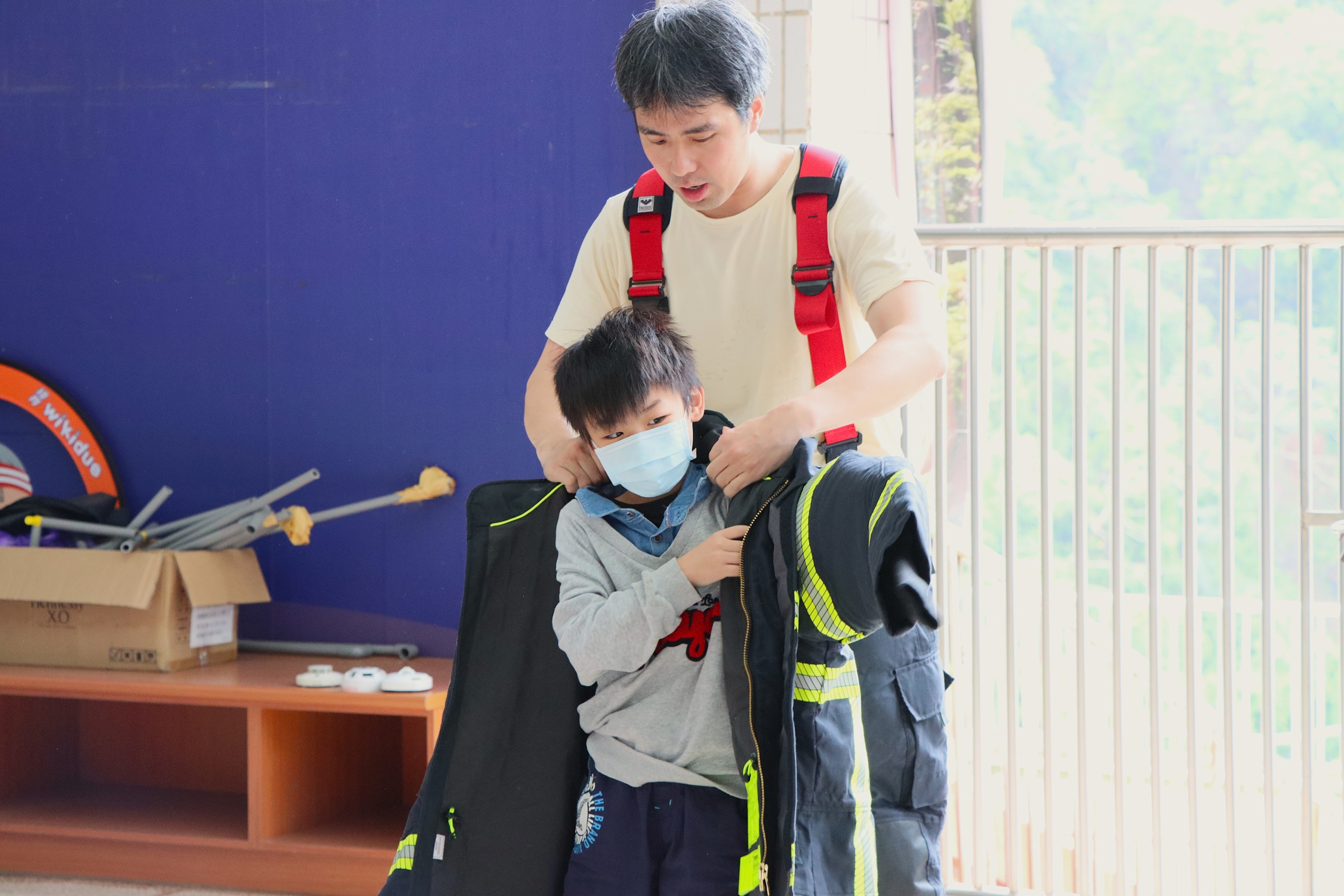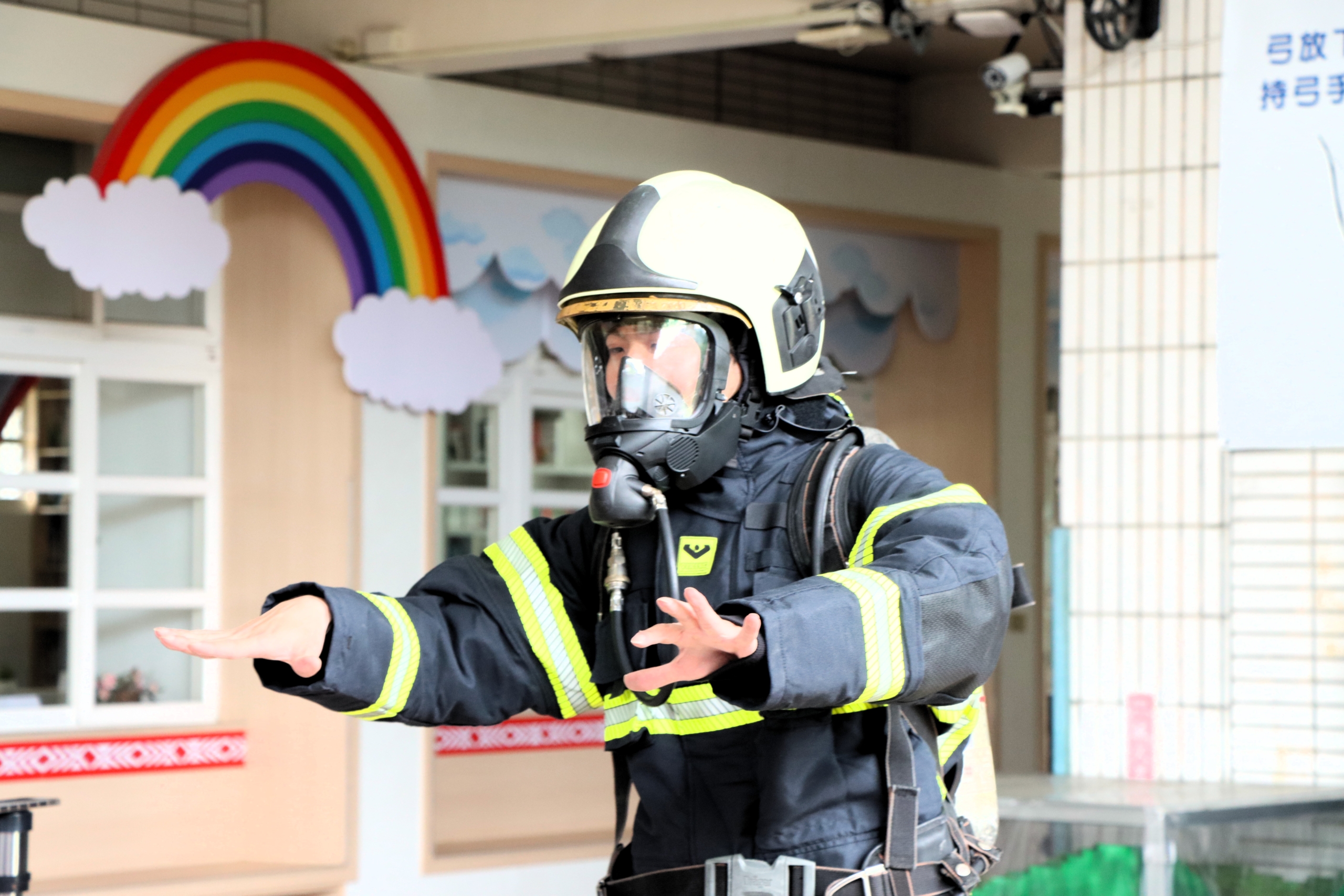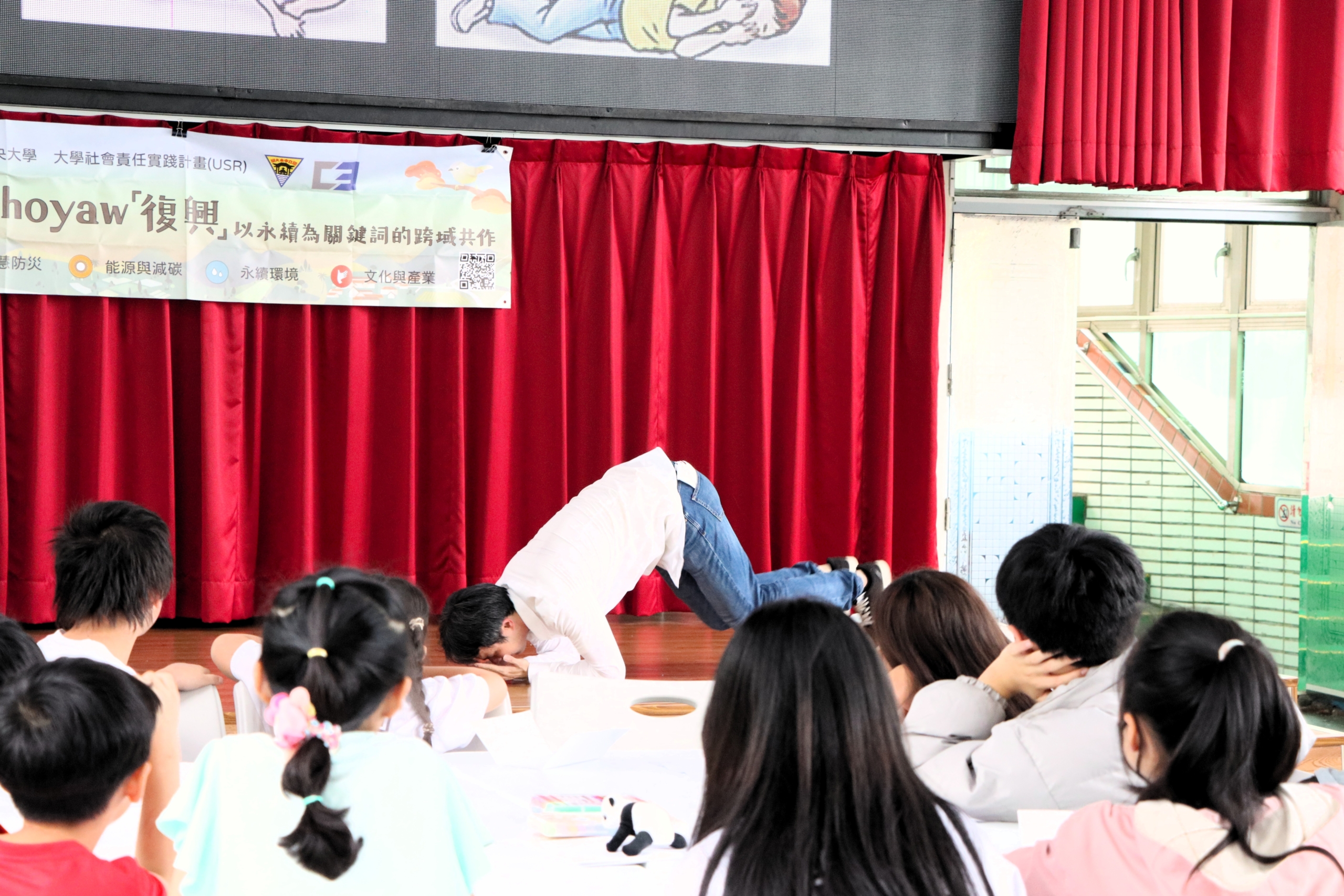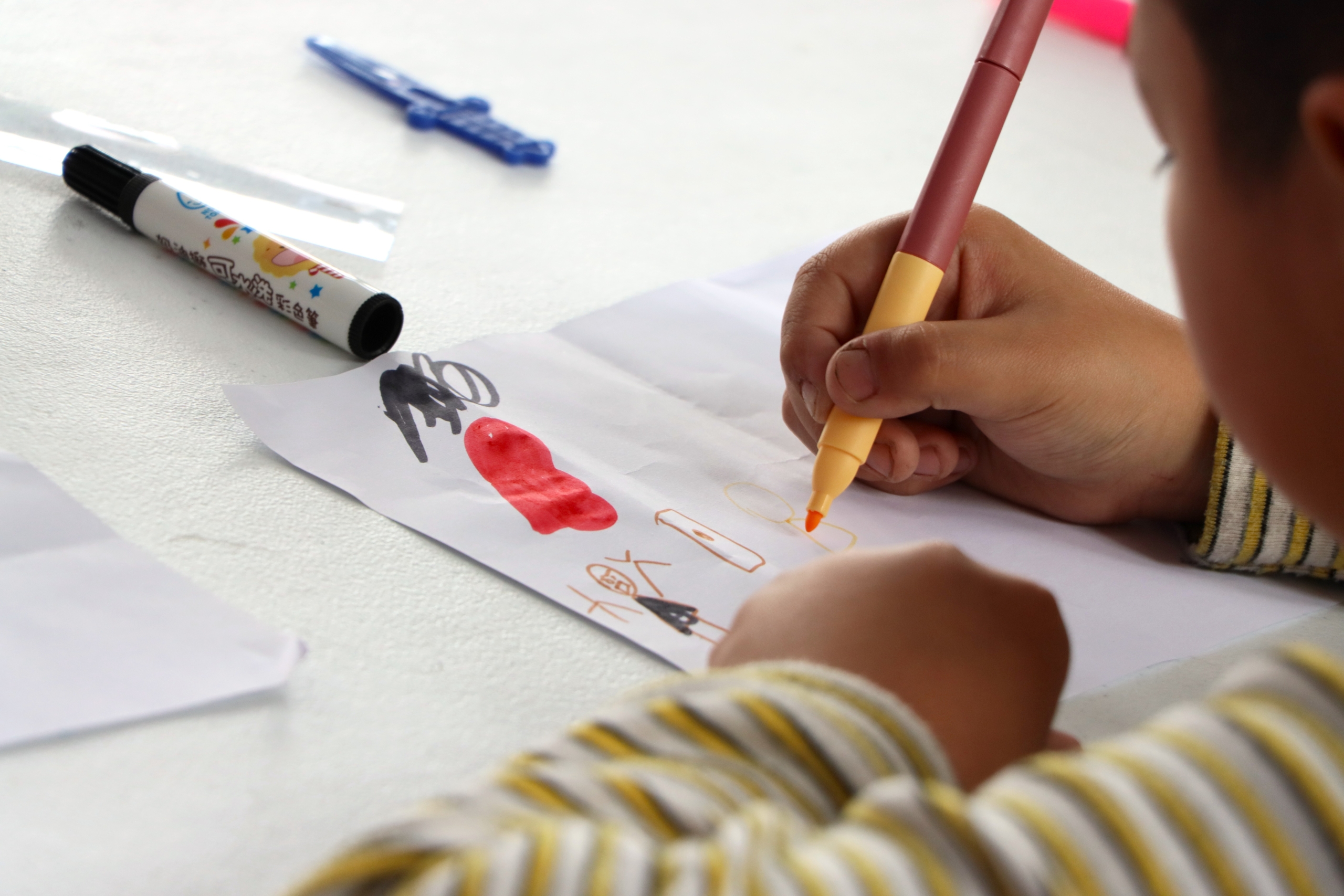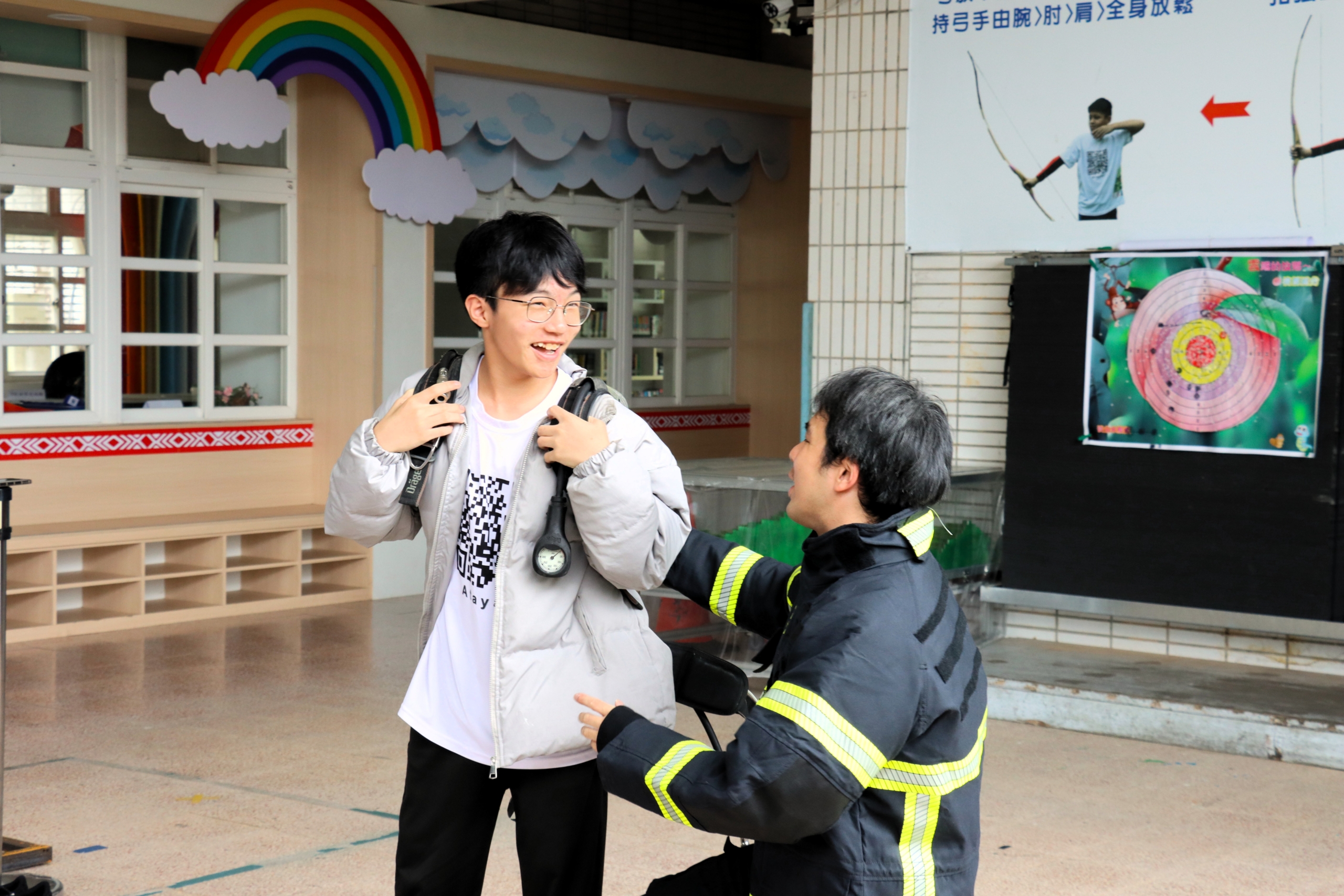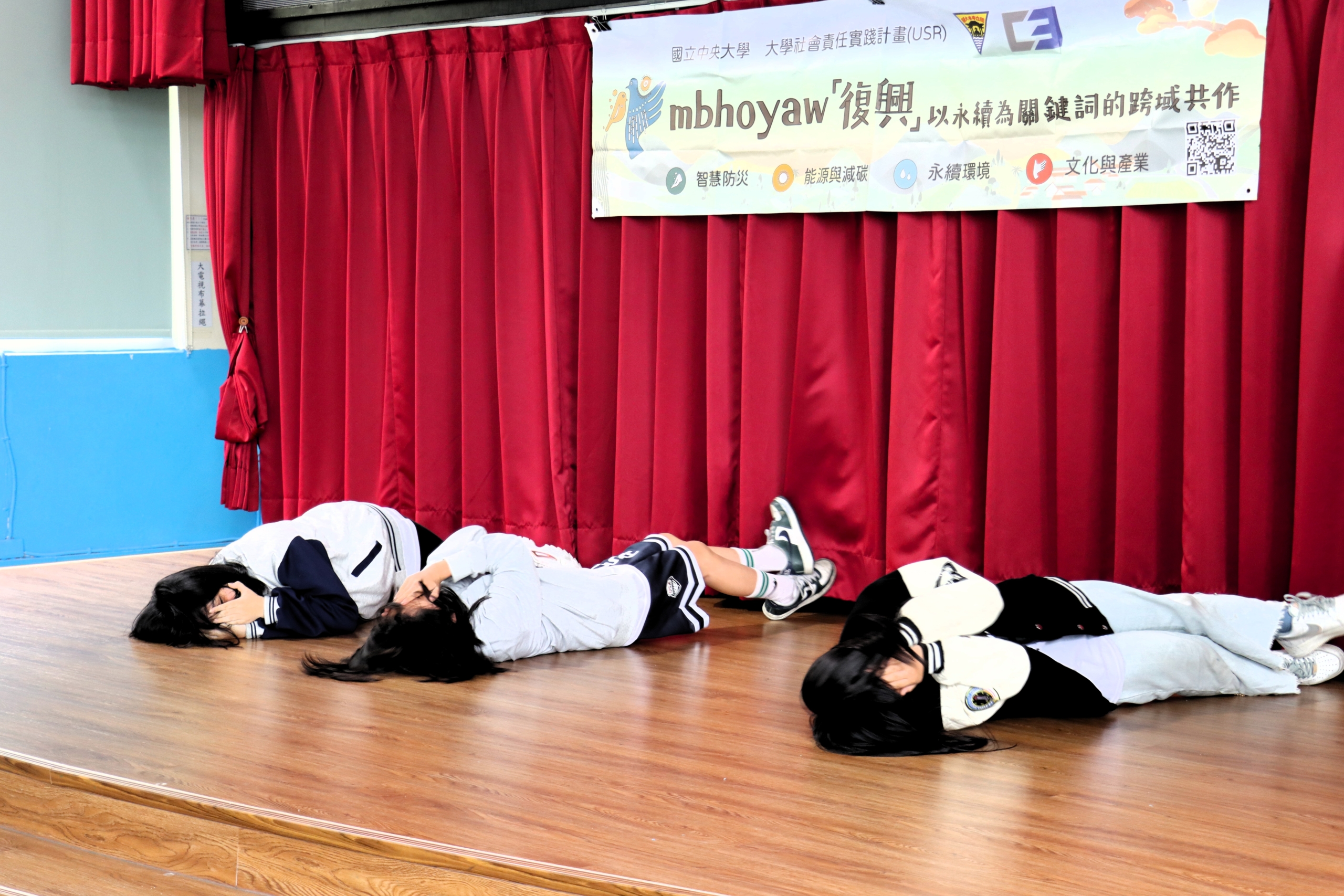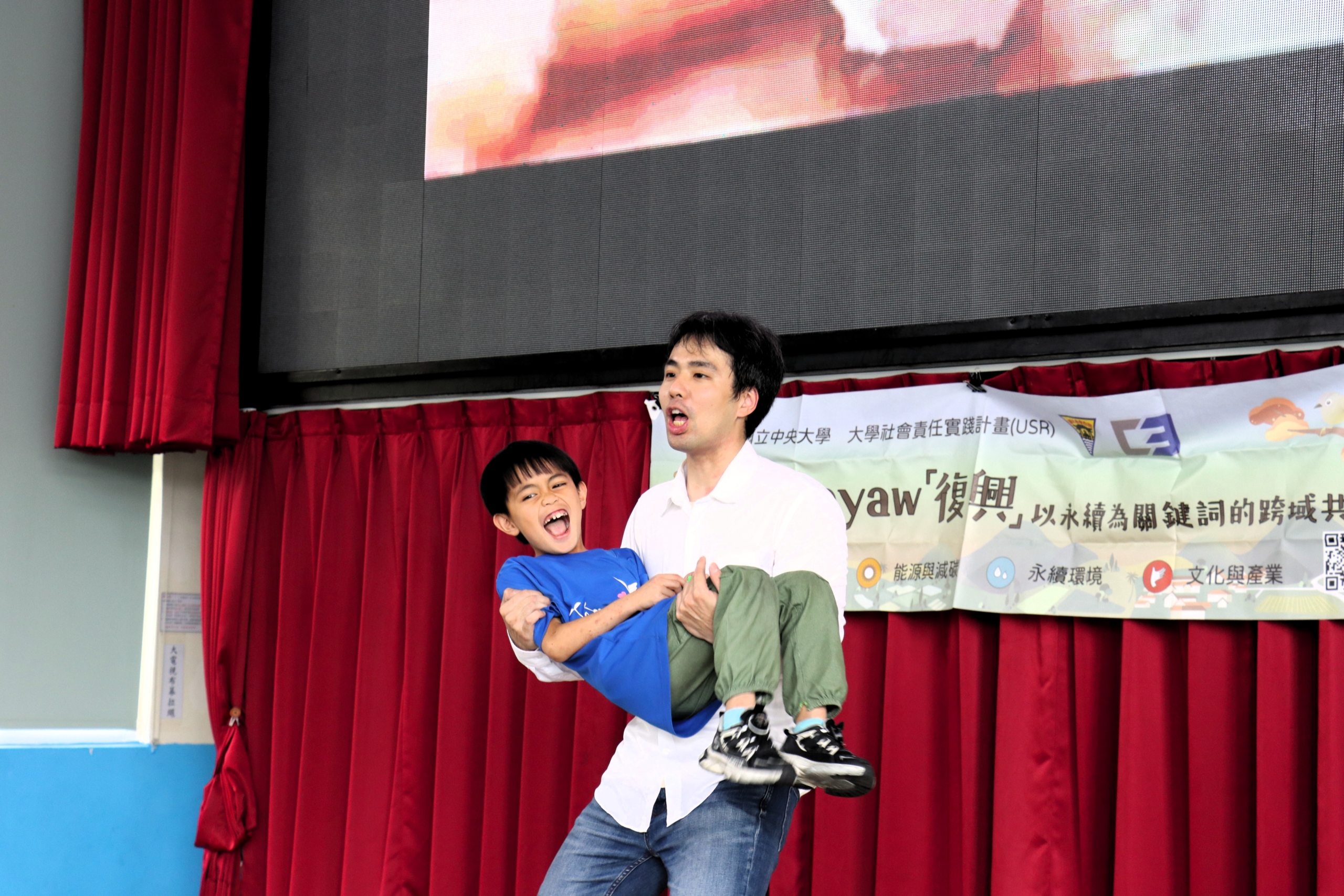At dawn, a sudden downpour descended. Raindrops blurred the car windows, damp bangs clung to foreheads, and the musty, humid air filled the vehicle—our journey up the mountain quietly immersed in the essence of water. The rain fell like threads, like waterfalls, soaking into our thoughts and saturating the car cabin. Only when we arrived at Yisheng Elementary School did it ease; our clothes began to dry, and the misty mountains, cleansed by the Grain Rain, finally revealed themselves. On the school’s newly built observation deck, a sofa seemed to sense the rhythm of the rain, quietly awaiting someone to sit and gaze into the distance.
A firefighter rolled in a suitcase—not packed with clothes, but filled with emergency gear. With a chuckle, he said, “I’ve forgotten how to put this on!” That light-hearted remark sparked warm laughter and instant affection from the children. Fire pants, fire jacket, boots, helmet—one by one, the children eagerly stepped forward, helping him dress piece by piece. It was a gentle coronation, a moment of tenderness as small, sincere hands equipped him with the symbols of honor and duty.
Once fully geared, air tank strapped on and helmet secured, his voice turned distant—each word accompanied by the sound of deep breathing. The rhythmic hiss echoed through the hallway, and the children, once lively and noisy, fell silent. It was a profound, unspoken empathy—a quiet attentiveness that softened every heart in the room.
“No fire without adults is safe; only with adults can a fire be controlled.”
“In a fire, what we race against is time—not a towel.”
These clear, resounding statements introduced new concepts to the children and challenged our own long-held assumptions about fire. In an emergency, escape isn’t an option—it’s a necessity. The firefighter shared haunting stories of people who, trying to retrieve towels, never made it out of their bathrooms. The room fell into a heavy, thoughtful silence—everyone shaken, everyone listening.
We might have once believed it best to open a door quickly during a fire, to avoid being trapped. But if the fire is outside, that door becomes a vital barrier. Open a window. Close the door. Call 119. A single door can be the threshold between life and death.
At the end of the session, the children drew the “Stop, Drop, and Roll” method on white paper. When fire touches your body, stop immediately to avoid feeding the flames. Drop to the ground. Roll from side to side, covering your face with your hands. Through rolling, the flames can be extinguished, and the injury minimized.
The mountain rain continued to fall gently, like a poem whispered by the earth. And fire—once a fearful force—was reframed, through the firefighter’s words, into something that could be understood and faced. The children, cleansed by rain, heard the voice of fire. Amid smoke and breath, they learned calm, they learned judgment. This wasn’t just a class—it was a profound dialogue between life and nature.
Written by Chang, Tzu-Yi
Edited by Li, Ruo-Jia
Photos by Chang, Tzu-Yi
After a semester away, I returned to Yisheng Elementary School as a student reporter to attend and document this round of fire safety education. Stepping back into the familiar forested landscape and seeing the children’s bright, familiar smiles, everything seemed unchanged—yet in subtle ways, I could sense they had quietly grown.
This year’s activity was held across two venues. It began on the school’s outdoor platform, where students from each grade lined up to participate in a basic disaster preparedness session. Officer Hsieh brought along a full set of firefighting gear, allowing the children to try it on themselves. Seeing their small frames swallowed up by the heavy equipment was not only adorable but also gave everyone a deeper appreciation for the physical demands and professionalism required of firefighters.
Throughout the session, Officer Hsieh was brimming with energy. His lively tone and frequent interaction with the students created a joyful and relaxed atmosphere. He even took the time to ask for the children’s names in their indigenous language, turning a fire safety lesson into something much more—an experience that honored cultural identity and created space for mutual respect. I, too, learned something new: the tanks carried by firefighters aren’t “oxygen tanks,” as we often think, but “air tanks.” These small yet significant details brought us closer to the realities of a fire scene.
When the firefighter donned his mask for a live demonstration, the crowd fell silent. Speaking through the mask proved difficult, and the children instinctively quieted, fully immersed in the intensity of the moment. This hands-on demonstration offered a visceral understanding of the harsh conditions inside a fire. The firefighter also offered crucial reminders—highlighting places like bathrooms and stairwells as commonly overlooked yet high-risk areas—and dispelled several widespread myths about fire escape strategies.
After the platform session, the students were divided into three groups and moved to the activity center for a fire simulation drill. The older students led the way by demonstrating the “Stop, Drop, and Roll” technique. As always, the children of the mountains were fearless and expressive, eagerly stepping up to model what they had learned and inspiring their peers to engage. The lesson also incorporated dynamic visual aids, including news clips and real case studies, giving the children a vivid and realistic grasp of the subject. From their wide-eyed focus and reactions, it was clear they were fully invested in the learning.
Following the drill, the firefighter encouraged the students to draw the steps of emergency escape. There was a touching little detail behind the colored pens they used—“Big Brother Firefighter,” as the children fondly called him, had personally gone out days before to buy them, just to ensure the kids could express their creativity freely. Surrounded by encouragement and companionship, each drawing bloomed with imagination and originality. In that moment, it was clear: learning could be joyful, meaningful, and deeply creative.
To wrap up the day, every child received a charming fire-extinguisher-shaped coin bank as a keepsake. Watching them excitedly show off their gifts and share the moment with their classmates, their pure, glowing smiles left a lasting impression. This fire safety event wasn’t just a lesson—it was a memory, gently etched into our hearts.
Though some time had passed since my last visit to the mountains, seeing the familiar scenery, the children’s faces, and the same warm, passionate eyes brought all the memories rushing back. Some had grown taller. New faces had joined the group. My hope is that they continue to carry that childlike joy and grow freely, just as they are. And for me, being able to return and witness their learning and transformation once more is a blessing beyond words.
Thank you, Yisheng Elementary, for allowing me to be part of such a meaningful day.
Written by Wang, Chien-Yu
Edited by Li, Ruo-Jia
Photos by Wang, Chien-Yu

